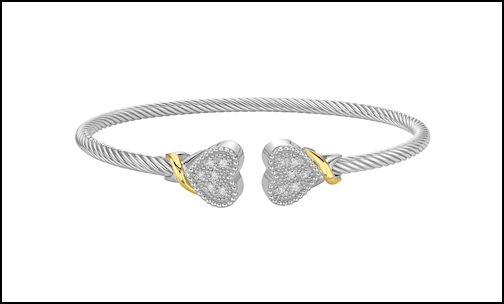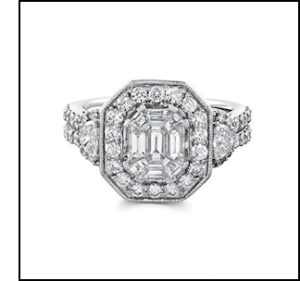Diamond Price Pressure
Prices of both natural and lab-grown diamonds have just experienced what is likely their most erratic year ever. Natural diamond prices dropped for eight consecutive months in 2024, a trend only recently halted by “pre-holiday demand and a drop in polished production,” according to Rapaport, producer of the RapNet Diamond Index. The root cause? Overproduction of lab-grown diamonds.
In a fall 2024 Robb Report article, De Beers Brands’ CEO Sandrine Conseiller firmly put the blame on “high volumes of supply coming online in China and India.” (In May 2024, De Beers lowered the per-carat price of its lab-grown diamonds from $800 to $500.) A month later at the JCK Las Vegas Show, it revealed a strategy to “revitalize desire for natural diamonds” and stop manufacturing lab-grown diamonds for jewelry.
“Growing production volumes have gone hand in hand with falling prices,” diamond industry analyst Paul Zimnisky recently told the Financial Times. “Over the past 10 years, the price of a slightly better than medium quality 1-carat round, polished natural diamond is down about 25 to 30% at retail. An equivalent lab-grown diamond is down about 90 to 95%. Today, a generic lab-grown diamond can be bought for as little as one-twentieth the price of an equivalent natural diamond.”
Further muddying the waters are the mixing of lab-grown and natural or mined diamonds—a mix of intentional moves and human errors. Debbie Azar, president and cofounder of Gem Science International (GSI), says it’s become commonplace.
“GSI is seeing both laboratory-grown diamonds mixed into natural diamond jewelry as well as natural diamonds in laboratory-grown jewelry,” she says. “As laboratory-grown diamonds growth processes advance, with features that closely mimic natural stones, the risk of undisclosed mixing has grown significantly. Advanced testing protocols, specialized equipment, and expertise are essential to accurately identify diamond growth origin, whether they are natural, laboratory-grown, or a mix of both.”
Given that diamonds account for more than half of sales in the fine-jewelry category in the U.S., manufacturers are often the first to be affected. After they do their diamond-testing due diligence—or send items to a lab like GSI to do it for them—they have the pricing problem to address.
SHEFI Diamonds’ Marketing Director Surbhi Jain maintains that the company does adjust prices when “significant” changes arise to ensure that “inventory remains competitively priced without compromising quality.”
SHEFI also credits its “long-standing partnerships,” which allow it to “navigate market changes smoothly, ensuring our retail partners continue to thrive,” adds Jain.
Ostbye, too, adjusts pricing when necessary. For sure, retailers are aware of the fluctuations.
“For the most part it is something that doesn’t need to be discussed,” explains Theresa Namie, merchandise manager. But when it does arise, the conversation typically surrounds lab-grown diamonds.
“We let them know we are doing the research and providing them with the best-quality product to meet their price points,” she observes.
The company also addresses costs through thoughtful designs.
“We are thinking about what would be most beneficial to our retailers so they can have consistent best sellers in stock and on-trend styles that will sell through,” adds Namie. “The biggest trend we are seeing in bridal is mined diamond engagement semi-mountings for larger center lab-grown diamonds.”



